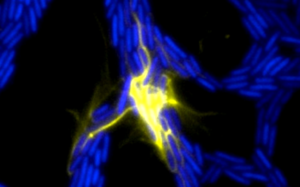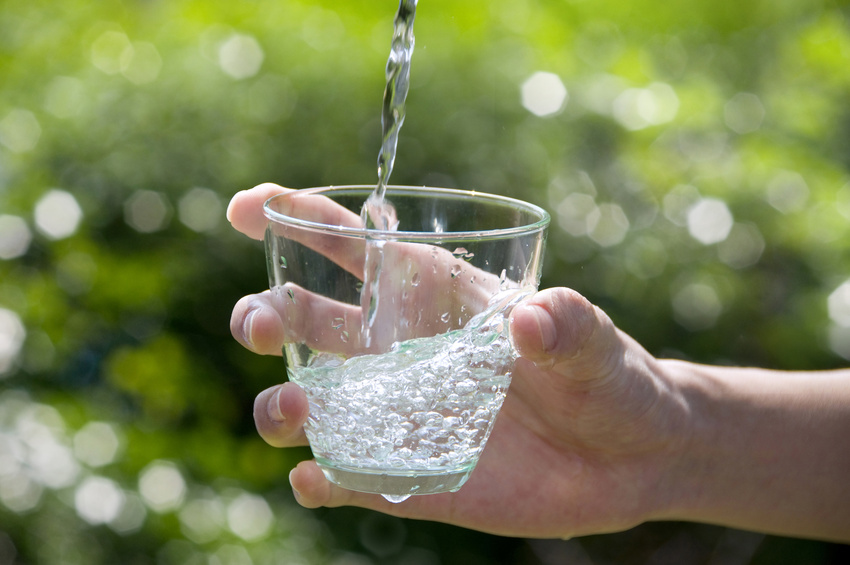Chlorine dioxide (ClO2) is a chemical compound renowned for its remarkable capacity to wage a microscopic battle against pathogens. This powerful oxidizing agent with its five weaponous electrons possesses the unique ability to accept multiple electrons from harmful microbes, making it a superior biocide compared to alternative oxidizers. Chlorine dioxide is so safe that the FDA approves its direct application to food.
Chlorine dioxide operates as an oxidant, meaning it can snatch electrons from other compounds during chemical reactions. This unique characteristic renders it highly toxic to a broad spectrum of bacteria and fungi. When chlorine dioxide encounters these microorganisms, it essentially weakens their molecular bonds, causing their cells to disintegrate. This process doesn’t stop there; it also alters the proteins within their structure, reducing enzyme function and ultimately resulting in the microbe’s demise.
Chlorine Dioxide Advantages
- Accepts up to five electrons per molecule from pathogens.
- Initiates a rapid and effective microbial destruction process.
- Selectively targets harmful pathogens without harming healthy cells.
Let’s take a look at the science at work behind the scenes, especially reviewing the 5 electrons that makes chlorine dioxide the most powerful pathogen-killing biocide.
Chemical Capacity
The capacity of chemicals refers to the number of electrons a molecule can accept from its surroundings. In the case of ClO2, each molecule can gain up to five electrons from microbial species, setting it apart from oxidizers that typically acquire only two electrons.
Chlorine Dioxide’s 5 Electron Weapons
Chlorine dioxide operates as a disinfectant primarily through oxidation, setting it apart as the sole biocide functioning as a molecular free radical. It boasts 19 electrons, displaying a distinctive affinity for substances that either release or absorb electrons. Notably, chlorine dioxide exclusively engages with compounds that emit electrons. In stark contrast, chlorine tends to incorporate a chlorine atom into or replace one within the substance it interacts with.

With 5 electrons to act as powerful weapons against any nonbeneficial pathogen and with a molecular weight containing 263% ‘available chlorine,’ it surpasses the oxidation capacity of chlorine by over 2.5 times.
When chlorine dioxide encounters a pathogen by donating up to 5 electrons to the anti-human pathogen causing it to essentially explode. It can also steal up to 5 electrons causing the pathogen to starve to death or implode.
When a chlorine dioxide ion encounters a pathogen, it initiates a rapid and destructive process akin to a microscopic explosion. This ion swiftly extracts up to five electrons from the pathogen, rendering it powerless and inert. Remarkably, this process is entirely harmless to human cells.
What sets chlorine dioxide apart is its ability to simultaneously target multiple proteins, preventing microorganisms from mutating and developing resistance. This makes it a formidable adversary against various pathogens, including notorious culprits like E. coli, MRSA, staph, and Listeria, all while being gentle on human skin.
Chlorine Dioxide in Action
Throughout the body, chlorine dioxide ions are transported via red blood cells to areas where pathogens lurk. These ions act as electric bullets, seeking out and disarming harmful bacteria, viruses, toxins, heavy metals, and parasites. These pathogens typically exhibit pH values outside the body’s healthy range and carry a positive ionic charge. The chlorine dioxide-equipped cells selectively target and neutralize these harmful invaders, leaving beneficial bacteria and healthy cells unharmed.
Oxidation Capacity of Chlorine Dioxide
- Over 2.5 times greater oxidation capacity compared to chlorine.
- Highly efficient in electron acceptance and microbial breakdown.
- Retains antimicrobial activity in the presence of organic matter, preventing resistance.
Selective Oxidation
Chlorine dioxide, or MMS (Miracle Mineral Solution), is adept at withdrawing four or five electrons from the walls of pathogens. It exhibits a strong attraction to these harmful entities, and upon contact, it unleashes its oxidative power. This selective oxidation ensures that beneficial elements within the body remain untouched.
Oxidation Capacity
The oxidation capacity of chlorine dioxide is a testament to its potency. The chlorine atom within ClO2 holds an oxidation number of +4, enabling it to accept up to 5 electrons during reduction. In comparison, chlorine dioxide boasts an oxidation capacity that is over 2.5 times greater than chlorine.
Chlorine dioxide’s electrifying potential as an oxidizing agent is a formidable asset in the fight against pathogens. Its ability to selectively target and neutralize harmful microbes while preserving the integrity of healthy cells makes it a valuable tool within the body’s immune system. This powerful compound’s unique electron-accepting capacity and selective oxidation set it apart as a potent biocide with applications ranging from water treatment to medical therapies. In the microscopic world, chlorine dioxide emerges as a true hero against pathogens, ensuring our well-being and health.
The Crucial Role of Hypochlorous Acid
- Chlorine dioxide’s unreactive state allows it to contribute to hypochlorous acid production.
- Hypochlorous acid is essential for eliminating pathogens and maintaining immune system function.
- A deficiency in hypochlorous acid production is known as myeloperoxidase deficiency, highlighting its significance.
When chlorine dioxide remains unreactive, it may lose an electron or two, allowing it to combine with a vital substance used by the immune system to produce hypochlorous acid. This acid is instrumental in eradicating pathogens, killer cells, and even cancerous cells. A deficiency in hypochlorous acid production is medically referred to as myeloperoxidase deficiency, underscoring its critical role.
Powerful Antiviral
Chlorine Dioxide is effective against both enveloped and non-enveloped viruses, including respiratory transmitted, enteric, and bloodborne viruses.
Chlorine dioxide isn’t confined to laboratory settings; its practical applications are vast. For example, it serves as a water purifier for campers, hikers, and backpackers who need to disinfect water from natural sources like rivers and lakes. Its antimicrobial properties find extensive use in food sanitation, surgical equipment sterilization, and more.
Microorganisms have shown an inability to develop resistance against chlorine dioxide, accentuating its effectiveness as a disinfectant over time.
Disinfect Before Drinking Water
The practical applications of chlorine dioxide are vast. In drinking water treatment, it excels by eliminating inorganic components like manganese and iron, removing unpleasant tastes and odors, and minimizing the formation of chlorine-related disinfection byproducts.
Chlorine dioxide proves instrumental in ensuring the safety of drinking water distribution networks. It thwarts bacterial growth and biofilm formation, which can be particularly challenging to combat.
Chlorine Dioxide and Biofilms
Biofilms create protective layers over pathogenic microorganisms, rendering them inaccessible to most disinfectants. However, chlorine dioxide not only eradicates biofilms but also kills off the enclosed pathogens. It remains active in the system for extended periods, which further discourages biofilm formation.
Head and Shoulders Above the Rest
Chlorine dioxide’s effectiveness extends to the removal of Legionella bacteria and acts as an exceptional disinfectant for water containing viruses.
While chlorine dioxide may be slightly more expensive than chlorine, its exceptional efficiency, long-lasting activity, and impeccable safety record make it an invaluable disinfection tool. It outshines its counterparts in swiftly eradicating microbes without causing harm to humans or animals.

